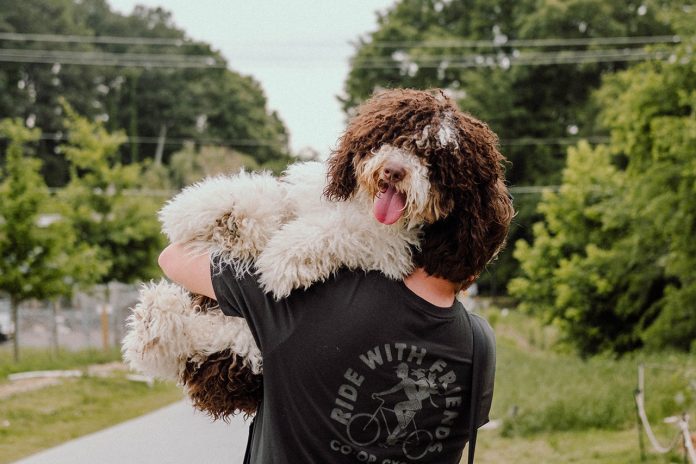Saint Bernards are best known as snowy mountain rescue dogs, but their calm temperament also makes them wonderful hiking companions in milder weather if properly conditioned. Their large size comes with physical limitations, but Saint Bernards enjoy exercising their natural strength and investigating new trails at a leisurely pace.
Table of Contents
You may also want to know: How to start hiking
Getting to Know the Saint Bernard
To start hiking with your Saint Bernard on the right paw, understand these key breed traits:
- Moderate energy with short activity bursts – They don’t require or want overly strenuous exercise. Short, slow hikes suit most adult Saints.
- Limited endurance and heat sensitivity – Avoid overexertion in duration or hot weather due to the risk of overheating.
- Massive size – Adults range from 140-180 pounds. Significant weight stresses their joints, especially on descents.
- Devoted nature – Saints bond deeply and aim to please their owners. They enjoy leisurely exploring new trails together.
- Friendly personality – Proper socialization prevents shyness. Saints tend to gently greet everyone on the trail.
When properly managed, their mild manner and loyalty make them pleasant hiking companions.

Choosing Saint Bernard-Friendly Hiking Trails
When selecting trails, look for:
- Gradual slopes without steep inclines – Downhills are especially hard on their joints.
- Soft dirt, grass, or groomed gravel paths – Avoid technical rocky terrain that risks cuts on paw pads.
- Access to water for swimming, drinking, and cooling.
- Shaded routes or morning/evening timing to avoid heat stress.
- Mileage 2-4 miles maximum to avoid overexertion. Be conservative with very young or senior Saints.
- Loop trails provide variety. Out-and-backs can become tedious.
Keeping Your Saint Bernard Hike-Ready
Pack these supplies:
- A sturdy leash and well-fitted harness – Help control their pulling power if distracted.
- Cooling jacket, towel, or portable fan – Stop overheating their thick fur coat.
- Drinking water and collapsible bowl – Bring extra to aid cooling.
- Dog first aid essentials – Disinfectant, gauze, tick remover, antibiotic ointment. Their fur hides small injuries.
- Treats – Reward their recall, focus, and check-ins. Pick soft versions they can eat easily on the go.
And don’t forget your own hiking necessities!
Training Tips for Hiking With a Saint Bernard
Work on key skills using reward-based methods:
- Loose leash walking – Use treats and a halt to discourage pulling, which can injure their trachea. Practice starting in low-distraction areas.
- A reliable recall – Use a long lead when first practicing. Their distraction tendencies require motivation and patience.
- The “leave it” command – Curb investigative urges towards food or dead critters on the trail.
- Exposure to new environments, people, and dogs – Boost their confidence through positive interactions.
Keep training sessions short, upbeat, and rewarding. You want your Saint eager for hiking together, not dreading it.

Safety Tips When Hiking With a Saint Bernard
Pay attention to these risks when hiking with a Saint Bernard:
- Overheating – Rest frequently in the shade, ensure hydration, and watch for signs of heat stress like heavy panting.
- Joint injuries – Carry them out immediately if lameness occurs and discontinue hiking for the day.
- Torn paw pads – Check feet regularly for damage from gravel, thorns, or sharp ice chunks.
- Skin fold infections – Gently clean and dry facial and body folds after water play.
Keep hiking distances conservative and allow your Saint Bernard to set the leisurely pace based on their comfort level. Be ready to assist or carry them if they become injured or overheated. Don’t push their physical limits.
After-Hike Tips
Once home from an invigorating hike, be sure to:
- Give treats and affection for good leash manners, recall, and focus.
- Provide fresh water then inspect feet, elbows, and hocks for irritations or injuries.
- Use a slicker brush to smooth out their coat and remove clingy burrs, seeds, or plant material.
- Prepare an extra tasty meal to replenish their spent energy like cooked chicken and rice.
With thoughtful preparation and reasonable expectations focused on their health and happiness, Saint Bernards can become wonderful hiking companions. Support their dedication and resilience by choosing adventures well within their physical capabilities.

Related Links:
https://en.wikipedia.org/wiki/Hiking




